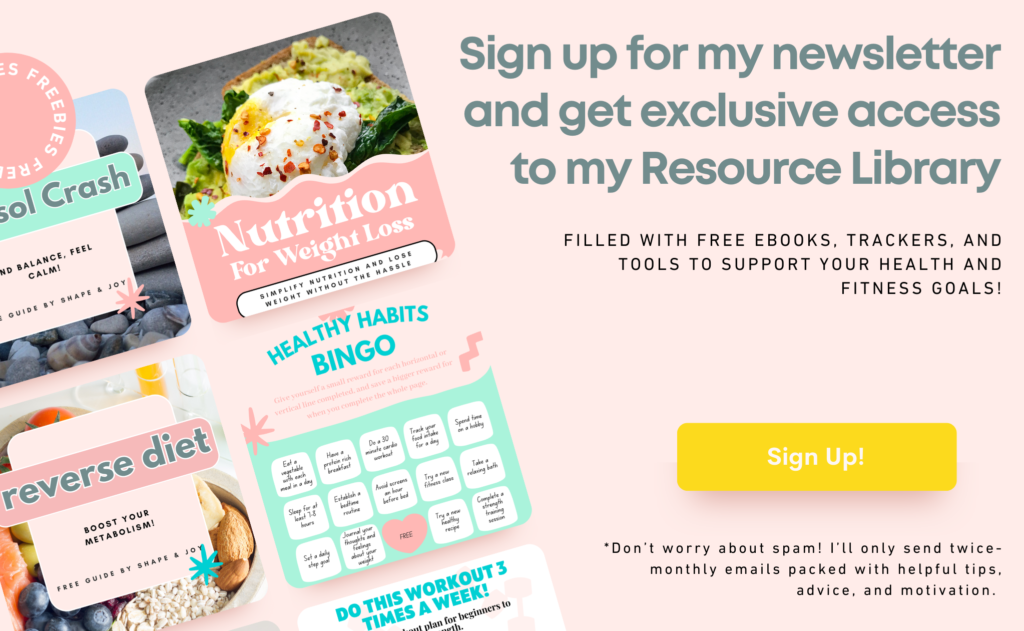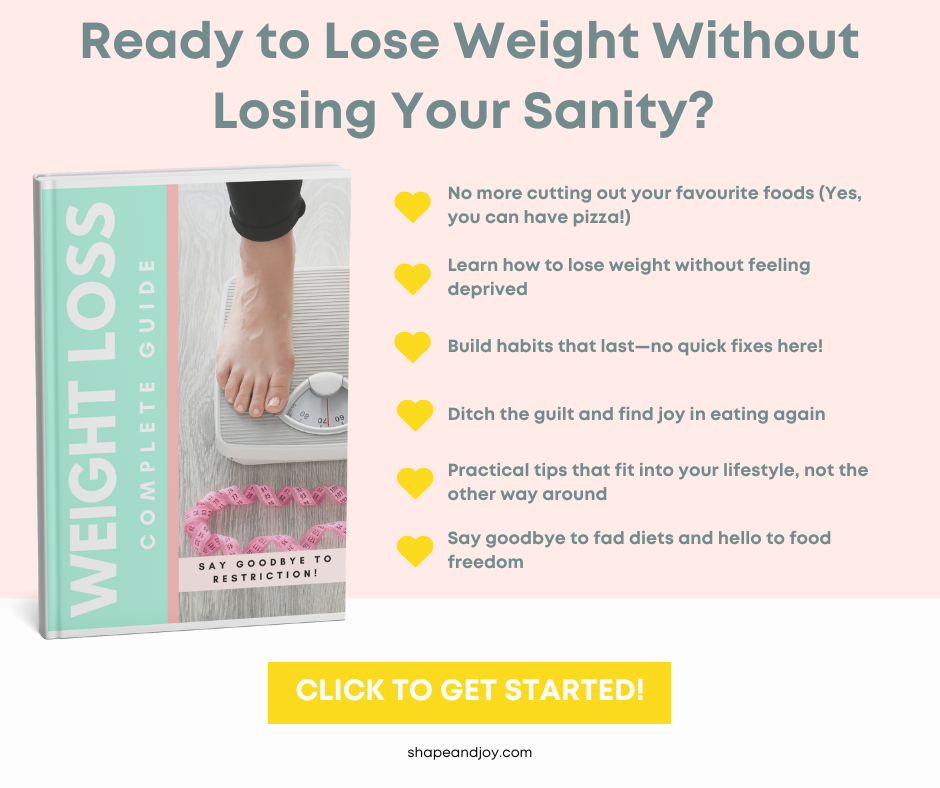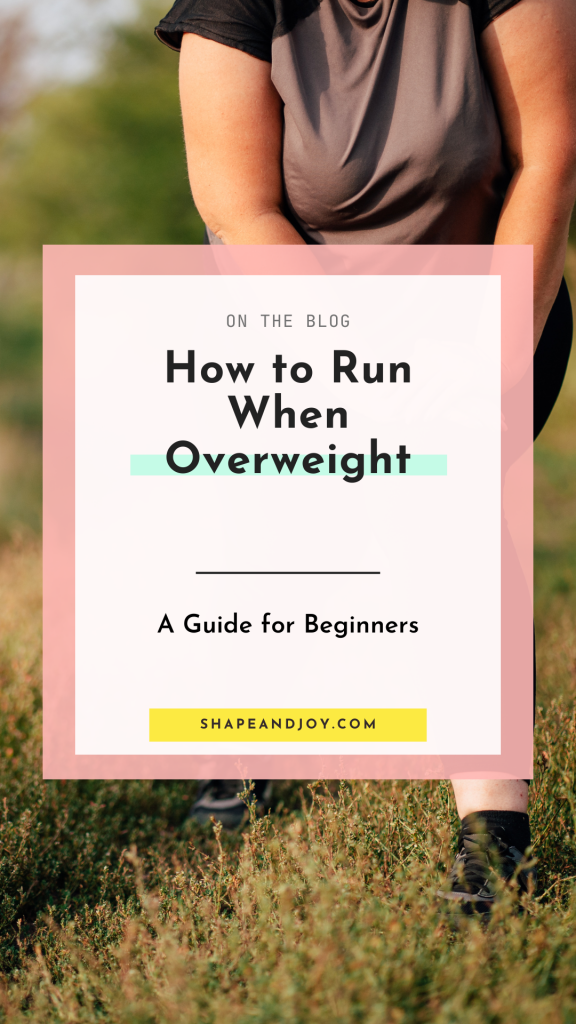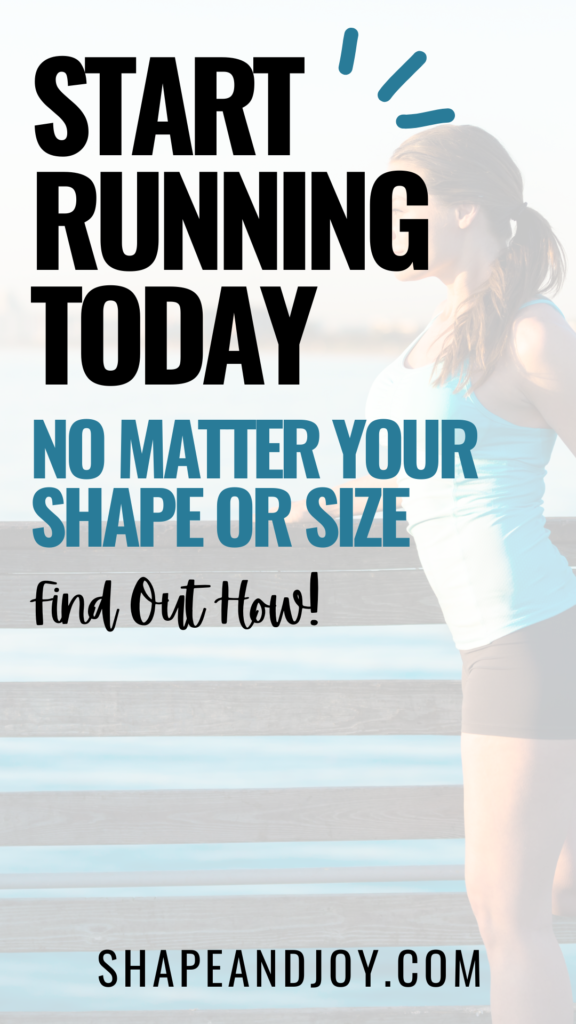Mindful Eating 101: How to Be in a Calorie Deficit with Ease
I’ve got to admit that when I used to think about staying in a calorie deficit, I thought it was the code for constant misery. Seriously, I pictured myself staring at a sad salad, dreaming of pizza, and wondering if I could actually be happy without chocolate. Spoiler alert: I wasn’t. But then, cue the plot twist—I discovered mindful eating.
Suddenly, food became less about restrictions and more about actually eating to feel good and enjoying my food.
And guess what? The calorie deficit part? It got so much easier.
No more battles with cravings, impulsive eating, or counting every single bite. Plus, I didn’t feel deprived, which was key for long-term success.
In this post, I’m going to show you how you can do the same. Yep, staying in a calorie deficit is possible without losing your mind or your love for food.
We’ll dive into how mindful eating works and how it can make this whole process feel a lot less like a diet and more like a way of life.
So, in this post, I’ll cover:
- What mindful eating really means (hint: no more guilt about food)
- How it helps you naturally eat less without all the drama
- Super simple tips to get started and feel like a mindful eating pro
Let’s dive in, shall we? 😊

1. What is Mindful Eating, Anyway?
Okay, first things first—what is this whole mindful eating thing?
Mindful eating is all about being present while you eat. No distractions, no autopilot.
It’s about eating to feel full and satisfied, paying attention to hunger and fullness cues, and choosing foods that nourish both your body and soul.
Basically, it’s eating with intention rather than just because the clock says it’s lunchtime or because you’re bored.
Think of it as a way to break free from the diet culture mentality, where you’re constantly counting calories and stressing over every bite. Instead, you focus on how you eat, not just what you eat.
Instead, you focus on how you eat, not just what you eat.
Nutrition isn’t just about calories—it’s about fuelling your whole body for wellbeing. 🌱 If you’re interested in a balanced approach that covers all aspects of health, check out my Holistic Nutrition 101 guide for tips on eating in a way that truly supports you.
2. How Does Mindful Eating Help You Stay in a Calorie Deficit?

Now, I know what you’re thinking—how can this possibly help me eat fewer calories?
When you’re truly mindful of what you’re eating, you naturally become more in tune with your body’s needs.
This means you’re more likely to stop overeating when you’re full, make healthy food choices, and avoid emotional eating.
Plus, food just tastes better when you’re paying attention to it, which can make smaller portions feel more satisfying.
Imagine eating a piece of chocolate cake.
If you’re mindlessly scrolling through Instagram while you eat it (guilty!), you’ll probably finish it before you even realise it—and might reach for another slice.
But if you take the time to really taste that cake, savouring every bite, you’ll probably feel satisfied with less.
That’s the power of mindful and conscious eating.
But it’s not just about eating mindfully—it also helps when your overall approach to nutrition is smart and sustainable. If you’re curious about science-backed ways to lose weight without stress, you’ll love my post on Science-Based Nutrition: 5 Tips to Lose Weight the Healthy Way. These tips work hand-in-hand with mindful eating to help you reach your goals without sacrificing your sanity.
3. Tips to Practice Mindful Eating

Slow Down: I get it—we’re all busy. But try to slow down when you eat. Chew your food thoroughly, put your fork down between bites, and take a breath. Not only will this help you enjoy your food more, but it also gives your brain time to register that you’re full.
Tune Into Your Hunger Cues: Before you dive into a meal, ask yourself—am I actually hungry? Or am I eating because I’m stressed, bored, or it’s just time to eat? If it’s not hunger, find another way to address what you’re feeling. A walk, a chat with a friend, or even just a glass of water can do wonders.
Eat Without Distractions: This one’s tough, but try eating without your phone, TV, or laptop in front of you. I promise, your meal will be way more enjoyable, and you’ll likely eat less because you’re more aware of what you’re putting into your body.
Enjoy Your Food: Sounds simple, right? But really, take the time to enjoy your food. Notice the flavours, textures, and colours. When you actually enjoy what you’re eating, you’re less likely to overeat.
Don’t Label Foods as “Good” or “Bad”: This is a BIGGIE. When we label foods as off-limits, we tend to crave them even more. Instead, allow yourself to enjoy all foods in moderation. Mindful eating is about balance, not restriction.
And when it comes to staying on track, a little bit of planning can go a long way. If you’re new to the idea of meal planning or want to dive deeper, my Meal Planning by Macros: Your Ultimate Guide can give you some great ideas for how to structure your meals without overthinking them.
4. Putting It All Together: How Mindful Eating Makes a Calorie Deficit Feel Easy
When you combine mindful eating with the goal of staying in a calorie deficit, something amazing happens—you start to feel in control of your eating habits, instead of them controlling you.
You’re no longer obsessing over every calorie or feeling guilty after meals.
Instead, you’re eating in a way that feels natural, satisfying, and sustainable.
You’re enjoying food, nourishing your body, and still making progress towards your weight loss goals.
Pairing mindful eating with a few healthy eating habits can make your progress feel effortless. If you want to make things even easier, don’t miss Simplify Nutrition With These 5 Easy Tips. It’s all about finding balance and making small changes that make a big difference.
It’s a way of life that can help you maintain your results long-term—because it’s not about deprivation, it’s about enjoyment and balance.
So, next time you sit down to eat, give mindful eating a try.
It might just be the key to making your calorie deficit feel like a breeze—and to finally finding peace with food.
For a practical take on balanced meals that support mindful, satisfying eating, head over to Victoria’s Secret vs. Reality: A Sustainable Meal Plan for Real Life. You’ll learn how to nourish your body without the model-diet mentality.
Sometimes, a little reminder can go a long way. I’ve found that keeping these Intuitive Eating Cards on hand helps me stay on track with my mindful eating habits. They’re great for keeping your intentions front and centre!

Conclusion
Mindful eating might sound like one of those things that requires a yoga mat and a quiet room, but honestly, it’s one of the most powerful (and surprisingly easy) ways to stay in a calorie deficit without feeling like you’re on a never-ending diet.
By tuning into your body, slowing down, and actually enjoying your food, you naturally eat less—without the stress.
Remember, it’s not about being perfect or getting it right all the time.
It’s about small, sustainable changes that help you build a healthy relationship with food while still making progress toward your goals.
So next time you sit down to eat, take a breath, slow down, and give mindful eating a go. Your body (and your taste buds) will thank you.
If you’re keen to dive deeper into mindful eating and truly rediscover the joy of eating, I highly recommend Mindful Eating: A Guide to Rediscovering a Healthy and Joyful Relationship with Food by Jan Chozen Bays. It’s full of practical exercises and insights to help you transform your relationship with food.
You’ve got this!

Further Resources
Studies
Mindful eating encourages healthier eating habits, reducing impulsive eating and calorie consumption. An experimental study found that both trait and state mindfulness were linked to healthier snack choices and lower calorie intake, showing how mindfulness can lead to healthier food decisions (Jordan et al., 2014).
Mindful eating can help reduce emotional eating and food cravings, making it easier to maintain a calorie deficit. A study combining mindfulness and prolonged chewing techniques reported a reduction in emotional and external eating, leading to weight loss that was sustained even after the intervention (Schnepper et al., 2019).
Mindful eating leads to improved satisfaction with smaller portions, as paying attention to the sensory experience of food can make it more enjoyable and fulfilling, reducing the likelihood of overeating. Participants in a mindful eating intervention consumed significantly fewer calories when they focused on the sensory properties of their meals (Seguias & Tapper, 2018).
Mindful eating helps reduce reward-driven eating, which is characterised by a lack of control and overconsumption. Mindfulness-based interventions help promote awareness of hunger and satiety cues, leading to healthier, more controlled eating habits (Mason et al., 2016).
Mindful eating can be integrated into weight management programs, effectively promoting weight loss without the need for strict calorie counting. Mindful eating interventions have been shown to be as effective as traditional diet programs for weight loss, with the added benefit of fostering a more enjoyable eating experience (Fuentes Artiles et al., 2019).





